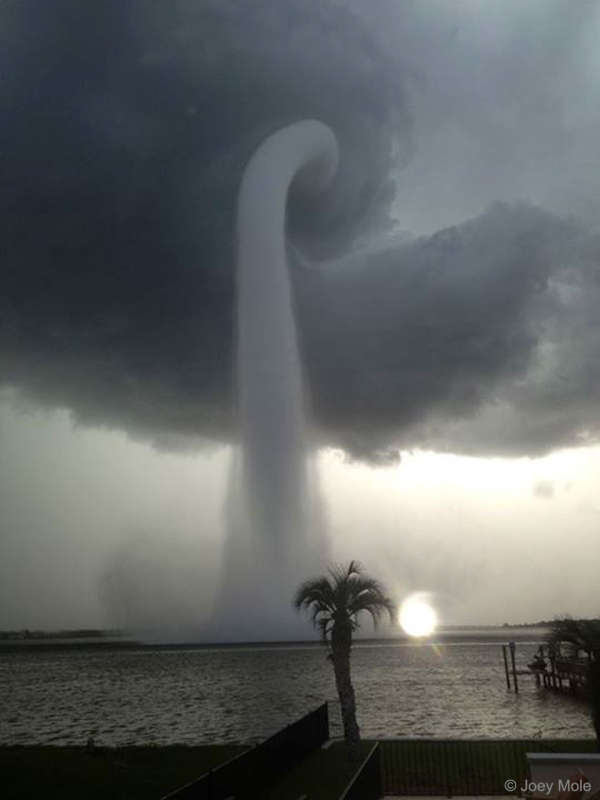
|
Credit & Copyright: Joey Mole
Explanation:
What's happening over the water?
Pictured here is one of the better images yet recorded of a
waterspout,
a type of tornado that occurs over water.
Waterspouts are spinning columns of rising moist air that
typically form over warm water.
Waterspouts can be as dangerous as
tornadoes
and can feature wind speeds over 200 kilometers per hour.
Some waterspouts form away from thunderstorms and even during relatively fair weather.
Waterspouts
may be relatively transparent and initially
visible only by an
unusual pattern they create on the
water.
The featured image was taken in 2013 July near
Tampa Bay,
Florida.
The Atlantic Ocean off the coast of Florida
is arguably the most active area in the world for waterspouts, with hundreds forming each year.
Your Sky Surprise:
What picture did APOD feature on your birthday? (post 1995)
|
January February March April May June July August September October November December |
| ||||||||||||||||||||||||||||||||||||||||||||||||
NASA Web Site Statements, Warnings, and Disclaimers
NASA Official: Jay Norris. Specific rights apply.
A service of: LHEA at NASA / GSFC
& Michigan Tech. U.
Based on Astronomy Picture
Of the Day
Publications with keywords: tornado
Publications with words: tornado
See also:
